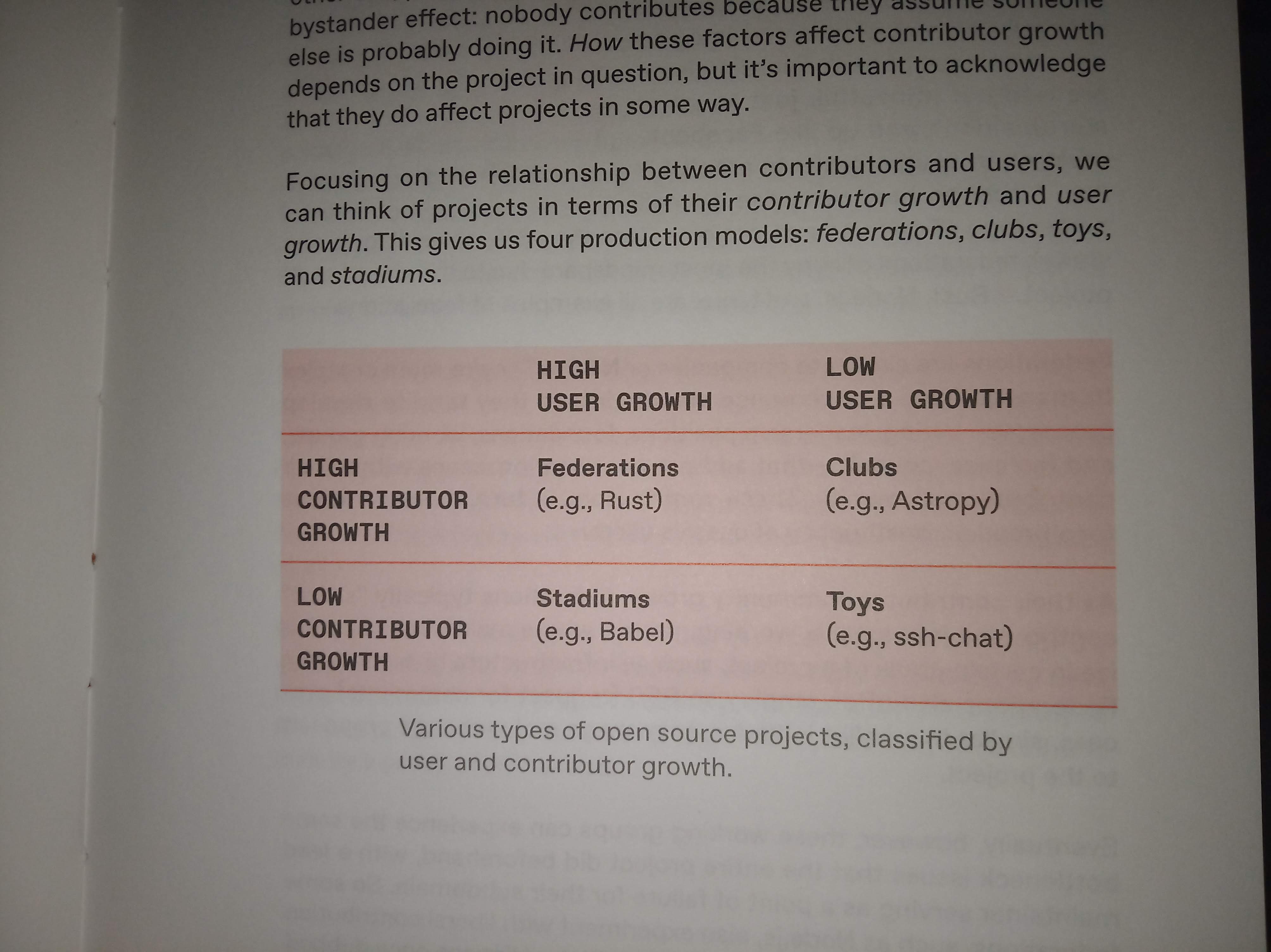Different types of open source projects based on community engagement

Different open source communities can be structured in different ways[ @eghbal2020 Working in public: the making and maintenance of open source software ] : - Federations : there a lot of users and a lot of contributors - Clubs : most users are also contributors - Stadiums : Few contributors and many users - Toys : Projects to show off, learn, personal, etc.
What I think the book fails at defining properly are what "users" mean. A contributor can be quantified through engagement on the repository, but the user can have many forms. How many users of Linux are there?
On the other hand, the examples Nadia Eghbal chose to showcase her ideas are tools for other developers. A "user" does not care about "Rust" (a programming language), a reader of a paper does not care about Astropy, etc. But a client of Dropbox is technically using Rust.
Also, I dislike the idea of measuring in "Growth". This is a derivative that can be easily negative, for example if the number of contributors goes down (is this possible or is it defined cumulatively?) In any case, it can go to zero, and nonetheless have the same structure.
Backlinks
These are the other notes that link to this one.
